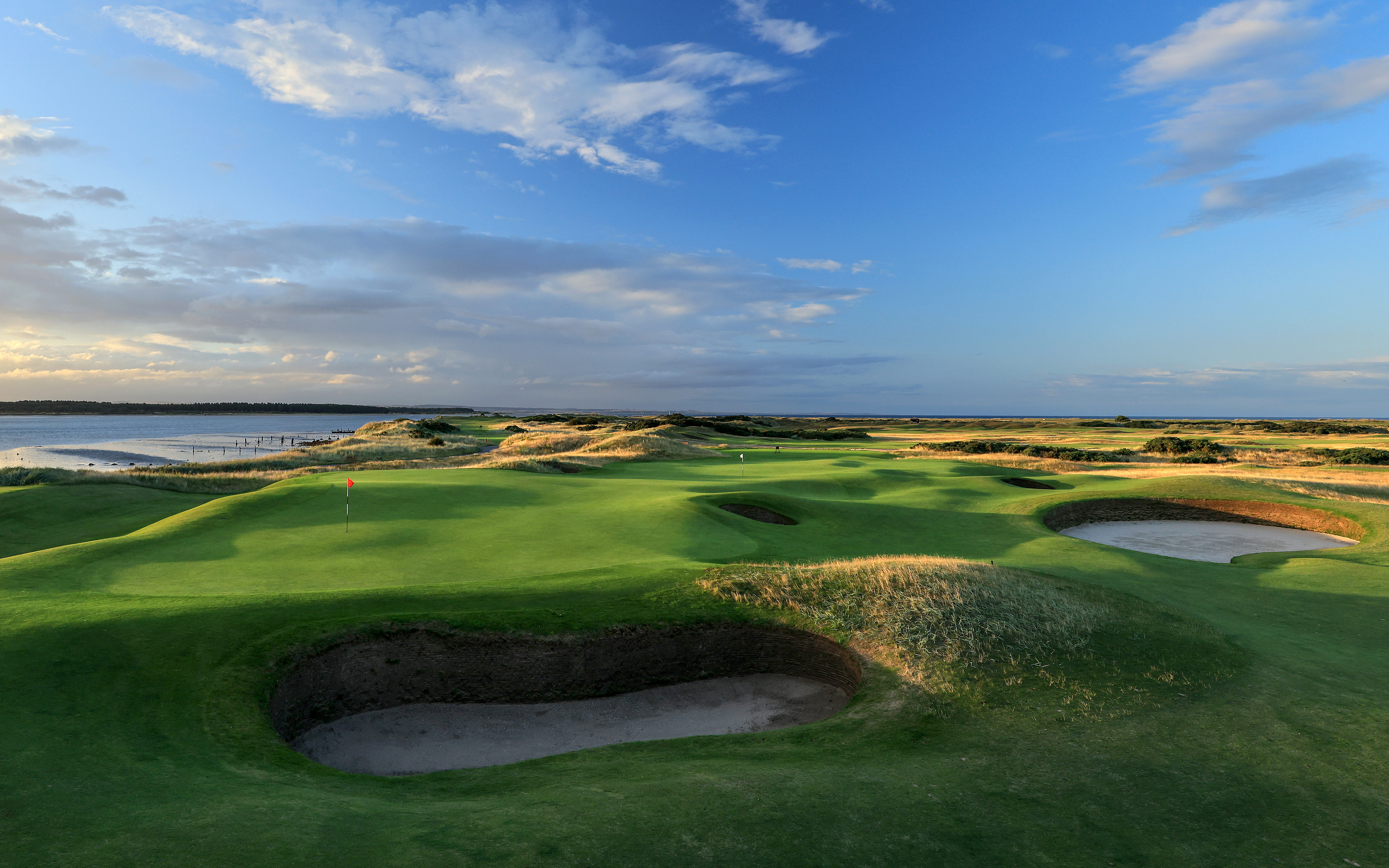How Is Course Difficulty Measured?
We've all played golf courses we think are either hard or easy, but just how is course difficulty measured and how objective is it?


We will all have played golf courses and come off thinking, ‘That was hard’, or occasionally even, ‘That was easy’. But just what is it that makes a golf course hard or easy?
Obviously, we can come up with reasons one way or the other based on our experiences – for example, lots of long holes, narrow fairways, thick rough, tricky greens and so on one way; plenty of room to miss it, relatively few hazards of any type and flat, undefended greens the other way.
Some courses have a reputation for difficulty – St Mellion in Cornwall, for example, or Carnoustie up in Angus – but under the World Handicap System introduced in 2020, rather than mere reputation, it is the Course Rating and Slope Rating that seek to quantify the degree of difficulty as objectively as possible in a way the old Standard Scratch Score scheme perhaps never quite could.
Course Rating (playing difficulty of a course for the scratch golfer) and Bogey Rating (playing difficulty for a 20- to 24-handicapper) now combine to determine the Slope Rating, which in turn dictates how many shots you get on a given course (your Course Handicap) based on your Handicap Index.
If you get more shots than your index, it will be because the Slope Rating for the tees you are playing from is higher than average and therefore the course has been rated as more difficult than average (and vice versa of course). Slope Ratings can range from 55 to 155 with a golf course of standard relative difficulty having a Slope Rating of 113.

Carnoustie is renowned for being a tough golf course - especially the closing stretch
Course Rating and Bogey Rating
The keys to measuring course difficulty are Course Rating and Bogey Rating. The former is calculated via the 'effective playing length' and 'obstacle factors' for the course (more of which below) and is expressed in strokes to one decimal point. The difference between that and the Bogey Rating determines the Slope Rating.
Par and course length alone are just not accurate enough indicators of course difficulty, although course length undeniably has a bearing. The WHS Course Rating System is highly objective and takes into account all of the factors that might affect playing difficulty, including, of course, some of those mentioned anecdotally at the start here.
Subscribe to the Golf Monthly newsletter to stay up to date with all the latest tour news, equipment news, reviews, head-to-heads and buyer’s guides from our team of experienced experts.
Course Rating teams use a comprehensive Course Rating System Guide that asks them to consider 460 variables on a standard course rating, from each set of tees. It uses table values, adjustments and formulas to calculate ratings and requires numerous specific measurements on each hole to ensure a very high degree of consistency among different course rating teams.
Of course, length is part of it – we all know that. But beyond that, the teams consider several factors that can further influence the playing length of the course along with ten ‘obstacle factors’ that affect the playing difficulty of each hole.
Factors influencing effective playing length
Roll
How much fairway roll will you get depending on surface conditions and contouring?
Doglegs
Might a hole with a dogleg design prevent or discourage a full tee shot being played?

Might you have to lay back off the tee on a dogleg?
Wind
What is the strength and direction of the average or prevailing wind?
Elevation changes
How will differences in elevation between tee and green and on approach shots affect how far the ball goes?
Forced lay-ups
Do various obstacles that cross the fairway force you to play short of them?
Altitude
Balls fly further at higher altitude – does that have any bearing on effective playing length?

The ball flies further up in the Alps at Crans-sur-Sierre
The 10 obstacle factors
Topography
What sort of stance and lie are you likely to get in the landing zone and do elevation changes impact on the approach shot?
Fairway
How wide are the fairway landing zones and how close the nearby obstacles, whether trees, penalty areas, bunkers or rough?

Narrow fairways add to the difficulty levels
Green target
How easy or hard is it to hit the green, how receptive is the green and how visible is it for the approach shot?
Recoverability and rough
How easy or difficult is the recovery if you miss the intended tee-shot landing zone or green?
Bunkers
How big and deep are the bunkers and how close to landing zones and greens?

The size, depth and location of bunkers is another factor in course difficulty
Lateral obstacle
How far away from the centre of fairways and greens are any lateral obstacles?
Crossing obstacle
How far is it to safely carry water, penalty areas, OOB or testing rough or heather?

Do any carries present a particular challenge?
Trees
How big, tall and dense are trees or woodland and how close to the centre of landing zones and greens? How difficult is the recovery from them?
Green surface
How testing are the greens in terms of speed, contouring, tiers etc?

What sort of a challenge do you face when you get to the green?
Psychological
What impact do the other nine obstacle factors have on your mental game – do they put you under extra pressure or allow you to breathe relatively easily?
As with many rankings and ratings, it will never be a precise science and we will all have played courses where the Course Rating or Slope Rating raises eyebrows one way or another. But, as you can see, it isn’t for any lack of desire to be as objective and thorough as possible when measuring the difficulty of a golf course.

Jeremy Ellwood has worked in the golf industry since 1993 and for Golf Monthly since 2002 when he started out as equipment editor. He is now a freelance journalist writing mainly for Golf Monthly. He is an expert on the Rules of Golf having qualified through an R&A course to become a golf referee. He is a senior panelist for Golf Monthly's Top 100 UK & Ireland Course Rankings and has played all of the Top 100 plus 91 of the Next 100, making him well-qualified when it comes to assessing and comparing our premier golf courses. He has now played 1,000 golf courses worldwide in 35 countries, from the humblest of nine-holers in the Scottish Highlands to the very grandest of international golf resorts. He reached the 1,000 mark on his 60th birthday in October 2023 on Vale do Lobo's Ocean course. Put him on a links course anywhere and he will be blissfully content.
Jezz can be contacted via Twitter - @JezzEllwoodGolf
Jeremy is currently playing...
Driver: Ping G425 LST 10.5˚ (draw setting), Mitsubishi Tensei AV Orange 55 S shaft
3 wood: Srixon ZX, EvenFlow Riptide 6.0 S 50g shaft
Hybrid: Ping G425 17˚, Mitsubishi Tensei CK Pro Orange 80 S shaft
Irons 3- to 8-iron: Ping i525, True Temper Dynamic Gold 105 R300 shafts
Irons 9-iron and PW: Honma TWorld TW747Vx, Nippon NS Pro regular shaft
Wedges: Ping Glide 4.0 50˚ and 54˚, 12˚ bounce, True Temper Dynamic Gold 105 R300 shafts
Putter: Kramski HPP 325
Ball: Any premium ball I can find in a charity shop or similar (or out on the course!)